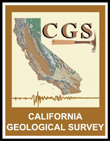
|
California Division of Mines
Speial Report 53 Igneous and Metamorphic Rocks of Parts of Sequoia and Kings Canyon National Parks, California |
MESOZOIC PLUTONIC ROCKS
(continued)
Age of the Plutonic Rocks
The plutonic rocks definitely post-date the metamorphic rocks, because the plutonic rocks truncate the beds in the metamorphic rocks and produce contact metamorphism of the pendant rocks. The age of the metamorphic rocks is not known, so age determinations from related plutonic areas must be taken as the only suggestion of the age of the Sequoia plutonic rocks.
In the Klamath Mountains, according to Hinds (1934), plutonic rocks similar in appearance to those in the Sierra Nevada cut Upper Jurassic beds. Sediments with Lower Cretaceous fossils and boulders of Sierra Nevada type plutonic rocks overlie a plutonic body.
In Baja California, Woodford and Harriss (1938) found Lower Cretaceous and early Upper Cretaceous fossiliferous metamorphic rocks intruded by granodiorite or quartz diorite that are comparable to the plutonic rocks of the Sierra Nevada. The plutonic rocks are probably Upper Cretaceous.
Larsen (1948) found that the southern California batholith intruded a thick series of volcanic rocks that was deposited on Triassic sediments. An erosion surface on the plutonic rocks is overlain by Upper Cretaceous rocks. The southern California rocks appear to be connected with those of Baja California and are similar in appearance to the southern California plutonic rocks described by Larsen.
Recent work on the absolute age of granitic rocks based on the lead-alpha activity ratio of the accessory minerals, particularly zircon, by Larsen and others (1952) has given an average age of 100 million years (mid-Cretaceous) (Larsen, et al., 1954) for several granitic rocks from the Sierra Nevada. Five of these specimens were from the Bishop district, about 40 miles northeast of the Sequoia area (P. C. Bateman, oral communication). Determinations of radioactive argon show that the granitic rocks of the Yosemite Valley area are about 83 to 95 million years old (Evernden, Curtis, and Lipson, 1957).

|
| PHOTO 15. Orbicular inclusion measuring 8 inches in largest diameter. |

|
| PHOTO 16. Sectional cut taken along line A-A' of Photo 15. Faint concentric structure is shown by trains of biotite. Pegmatite is found between the two rims on the right and surrounding the small inclusion on the left. A-A' = 5 inches. |
The granitic province from the Klamath Mountains to Baja California contains intrusions as old as Upper Jurassic and as young as Upper Cretaceous. The granitic rocks of the Sequoia area belong somewhere within this range; recent work suggests a Cretaceous age.
| <<< Previous | <<< Contents >>> | Next >>> |
ca/cdm-sr-53/sec3c.htm
Last Updated: 18-Jan-2007